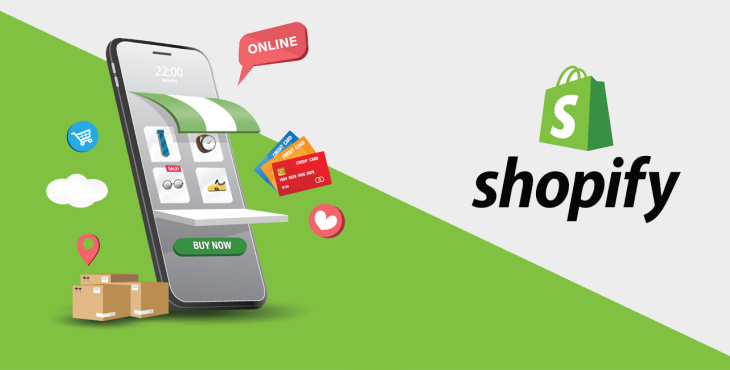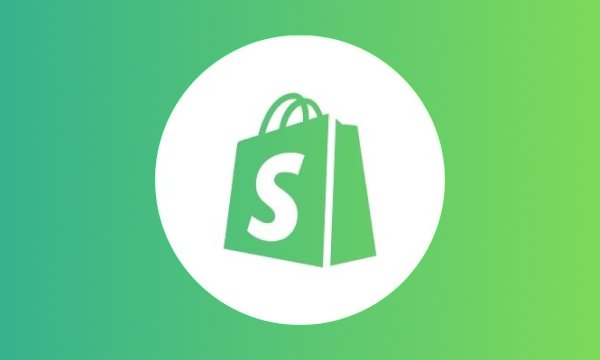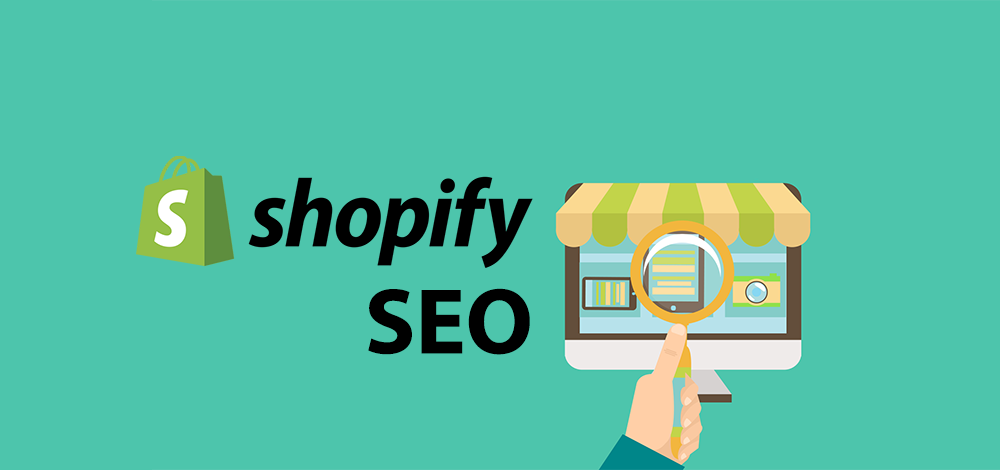Shopify Commerce Components: Everything You Need to Know

In the past few years, the enterprise e-commerce industry has seen a steady rise in the use of headless and composable systems. This shift towards composable architecture has given businesses the power to create and manage their own custom commerce applications. Plus, the introduction of Shopify Commerce Components has further added to their convenience.
This state-of-the-art yet composable stack is engineered to tackle the challenges of enterprise retail. It provides brands with the liberty to select and smoothly incorporate Shopify’s modular components into their existing services, all while using any front-end framework of their choice.
With the introduction of Commerce Components, we are sure Shopify is redefining the future of headless commerce for enterprises, promoting unmatched flexibility and potential for growth. If you’re a business struggling with e-commerce growth, understanding Shopify’s commerce components is way more crucial than you think. So, let’s start this comprehensive guide to understanding Shopify Commerce Components.
What Are Shopify Commerce Components?
Shopify Commerce Components is a set of modular tech stacks designed for large-scale businesses. These components can be incorporated into your existing ecommerce platforms that are not necessarily powered by Shopify.
This technology stack comprises pre-developed and validated code, which can be utilized in a custom headless storefront and hosting provider. The fundamental components include feature from all crucial aspects of customer experiences such as cart, checkout, data, and shipping.
It offers enterprise retailers the ability to seamlessly integrate components that connect with Shopify and leverage Shopify’s worldwide infrastructure.
Why Do You Need Commerce Components by Shopify?
Agility, adaptability, and scalability are vital in our fast-moving business world. Companies must remain up-to-date and constantly innovate to outpace their rivals. Yet, conventional structures often find it challenging to match the speed of technological advancements. So, here are some signs that underscore the need for Commerce Components by Shopify:
- The era of a universal solution for e-commerce is over. Businesses now require the flexibility to blend various components from different vendors or effortlessly create tailor-made solutions to cater to their specific requirements.
- The Software as a Service (SaaS) model has seen a surge in adoption. Companies are using the power of SaaS across their entire platform architecture. This model brings advantages such as simplified upgrades and maintenance, along with the capacity to execute substantial server modifications.
- Companies are increasingly embracing cloud-native architectures to guarantee smooth scalability and flexibility. Whether applications are cloud-based or on-premises, the capability to swiftly scale up or down as needed is essential.
List of Components in Shopify Commerce Components
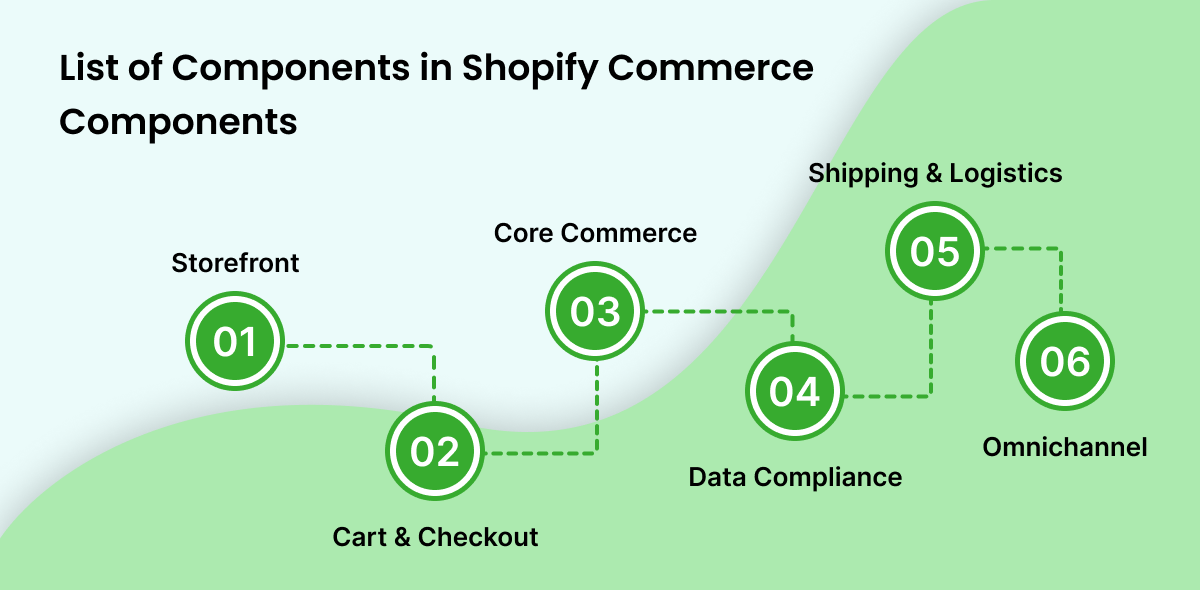
Shopify Commerce Components is a powerful tool that provides over 30 ready-to-use, device-tested features. These can be seamlessly integrated into any new or existing headless e-commerce store. The aim is to harness Shopify’s robust capabilities in a headless environment, giving enterprise retailers full control over their technology stack.
These components are categorized into six main areas, which we’ll explore in more depth:
Storefront
Enterprise retailers can create fully customized storefronts using their preferred development framework and hosting provider. These storefronts can then be linked to Shopify’s infrastructure via Shopify’s Headless APIs or SDK.
Shopify also provides its own specialized react framework, known as Hydrogen, which can be used to develop the store’s headless front end. The components in Storefront include
- Headless API
- Headless SDK
- Low-code Storefronts
- Headless Hostings with Oxygen
- Content
- Storefront Search
Cart & Checkout
The commerce components also offer the capability to create a shopping cart that utilizes Shopify’s API and cart app extensions, along with Shopify’s smooth checkout process.
Retailers have the flexibility to continue using their existing payment providers or switch to Shopify Payments/Payment partners. Additional components and features include a tax platform and fraud protection. The components available include
- Cart
- Checkout Platform
- Payments Platform
- Tax Platform
- Fraud Protection
Core Commerce
Shopify’s Commerce Components provide the basic building blocks for a successful online store. These include syncing your product catalog, managing custom data, facilitating international sales, handling subscriptions, customer data management, offering discounts, and providing custom backend functionality for B2B operations. The components of core commerce include
- Product Catalogue
- Custom Data Models
- Cross-border Selling
- Subscriptions
- Customer Data
- Discounts
- Functions Extensibility
- B2B
Data Compliance
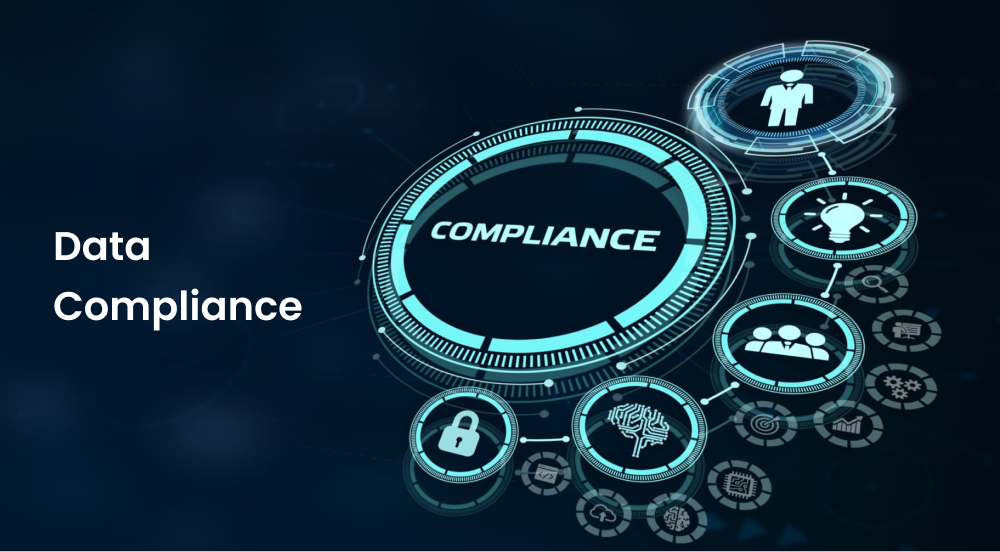
Shopify takes pride in its robust data compliance features. It offers data analysis, marketing insights, and card data processing and ensures security and compliance. Brands can manage privacy and security with detailed permissions, security controls, and adherence to SOC 2 compliance standards. The commerce components in Data Compliance include
- Data Analysis
- Marketing Insights
- Card Data and Vaulting
- Security and Compliance
Shipping & Logistics
With Commerce Components, retailers can manage all aspects of logistics, from inventory tracking to order management and returns. It even includes a Shipping Label API.
Shopify gives retailers the flexibility to use their own technology, as they retain ownership of their custom software. The component include
- Fulfillment
- Order Management
- Inventory
- Returns
- Shipping Labels API
Omnichannel
Shopify positions itself as a comprehensive backend dashboard for businesses, and its Commerce Components uphold this vision. Brands can manage various selling channels, including Point of Sale (POS), social commerce, and chat/support selling. The commerce components of omnichannel include
- Point of Sale (POS)
- Social Commerce
- Chat & Support
Who Can Use Shopify Commerce Components?
Shopify’s Commerce Components isn’t a one-size-fits-all solution. It’s tailored specifically for large-scale businesses in the retail industry. Shopify has explicitly stated that this offering is only for retailers who are raking in revenues exceeding £500M.
It’s an ideal fit for retailers juggling multiple brands, operating both online and offline, and managing large teams. For many existing merchants, this might seem like a shift from their usual operations. However, this is a significant stride for Shopify as it now stands as a strong competitor against other enterprise brand solutions.
How Much Does It Cost to Use Shopify Commerce Components?
Shopify hasn’t disclosed any specific pricing details for commerce components. However, they’ve indicated that the cost will be determined based on usage and the number of components a retailer intends to use.
However, it’s always advisable to conduct an in-depth discovery phase. This allows for a comprehensive understanding of the retailer’s needs and enables the customization of pricing to suit those specific requirements.
Benefits of Shopify Commerce Components
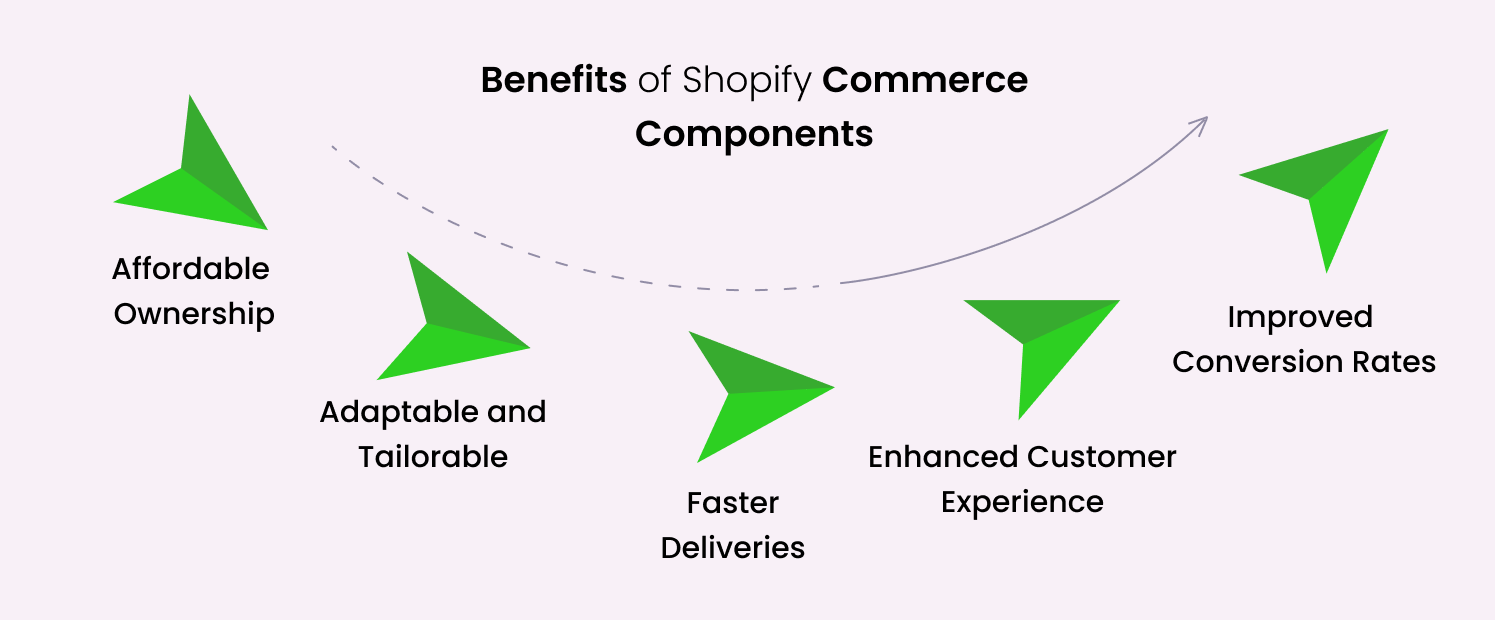
Here are some benefits of using Shopify commerce components for e-commerce platforms:
Affordable Ownership
The unique advantage of commerce components lies in their ability to replace various products available in the market at a lower cost. This not only accelerates your initial phase but also allows you to add or replace tools as your venture expands, avoiding the hefty expenses typically associated with a single digital experience provider.
Adaptable and Tailorable
E-commerce businesses are not bound to a single technological base, offering them a wide array of options and diverse strategies to tackle any challenges they encounter.
They can tailor their tech infrastructure to align with their business goals instead of being restricted by the technology’s limitations. Plus, they have the freedom to change their minds at any time—if a particular toolset doesn’t meet their satisfaction, they can simply choose a different one.
Faster Deliveries
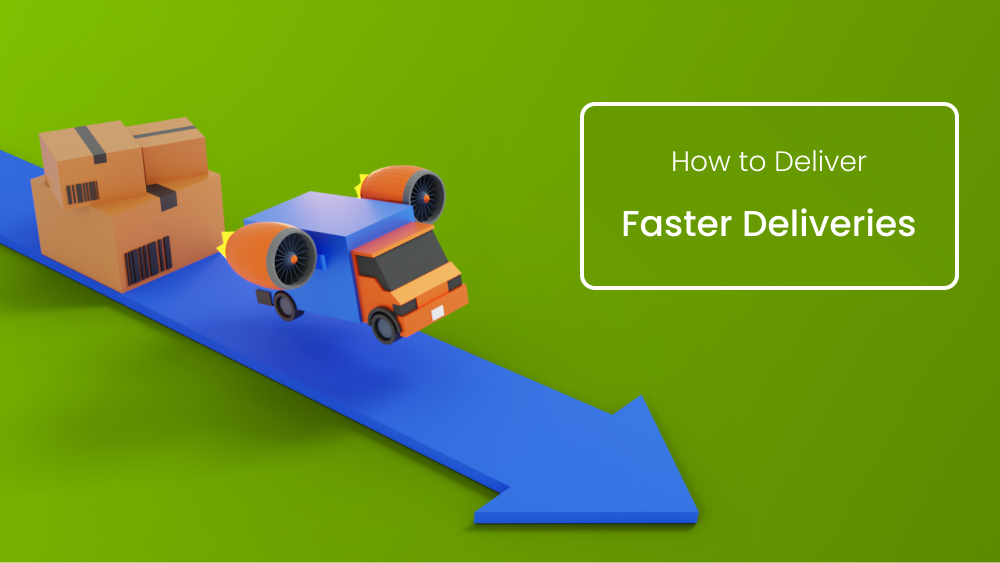
Customized solutions that align with business needs result in less clutter and reduced need for guidance. Composable commerce saves time previously spent on platform customization and staff training, allowing it to be used for more valuable business activities.
This makes companies more agile, enabling marketers to easily create, evaluate, and modify their content delivery and digital campaigns.
Enhanced Customer Experience
Shopify’s commerce components are designed to be mobile-friendly and responsive. This means they automatically adapt to the screen size on which they are viewed.
Improved Conversion Rates
Shopify’s commerce components enable merchants to design custom pages with specific layouts, potentially boosting conversion rates.
Are Shopify Plus and Commerce Components the Same?
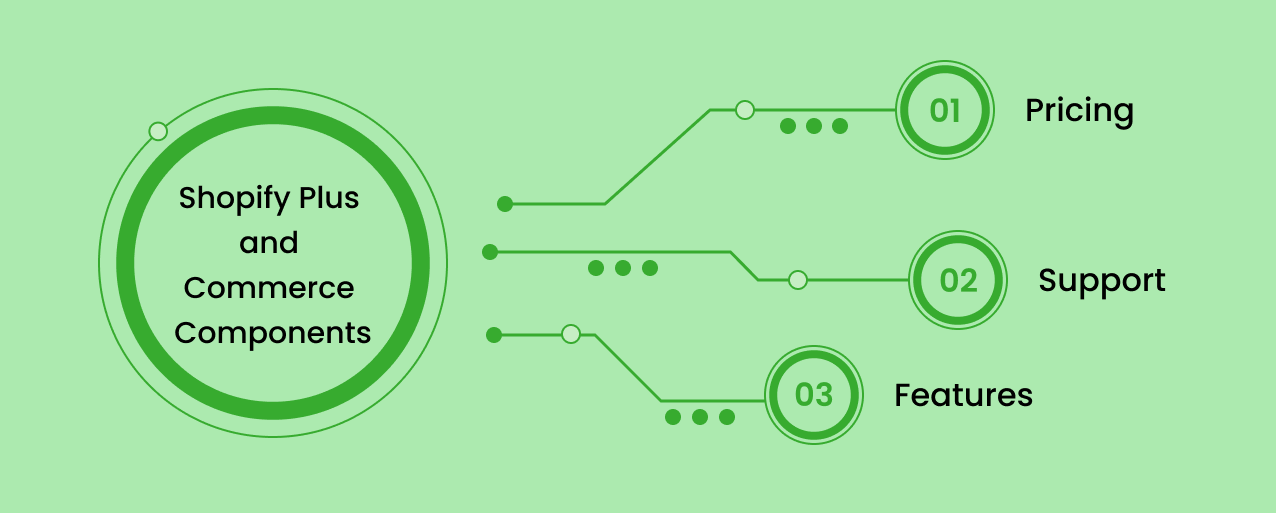
No, Shopify Plus and Commerce Components are not the same. Shopify Plus is a high-end solution of Shopify designed for large-scale businesses, offering advanced features and dedicated support.
On the other hand, Commerce Components is a specific offering within Shopify, aimed at enterprise retail. It’s designed for retailers with revenues exceeding £500M and offers the flexibility to use various components based on the retailer’s needs.
So, while both are part of Shopify’s ecosystem, they serve different purposes and are tailored based on the business’s requirements.
Pricing
Shopify Plus uses a conventional pricing plan, which includes a variable fee of 0.4%, a discount of 0.15% when Shopify Payments is used, and a base monthly charge of $2,000 USD.
Contrastingly, Commerce Components presents a customized costing structure that is contingent on the usage and the distinct components selected by retailers, adhering to four fundamental principles:
- Modularity: Retailers are invoiced solely for the components they choose to employ, offering adaptability and cost management.
- Usage-Based Tiers: The cost for each component is ascertained by the retailer’s actual usage of that component, with unit costs diminishing as usage escalates, guaranteeing equitable and scalable costing.
- Predictability: The costing structure is devised for yearly commitments, providing retailers with transparency and assurance about their expenditures.
- Bundle Discounts: Retailers can benefit from escalating discounts as they commit to additional components, motivating them to adopt a thorough and integrated solution.
This strategy ensures that retailers have an economical and customized costing model that aligns with their specific needs and usage patterns.
Support
Merchants using Shopify Plus receive extensive support, including a dedicated Customer Success Manager and specialized launch assistance.
In contrast, retailers using Commerce Components gain privileged access to Shopify’s Professional Services, which offer high-level service agreements designed to meet the needs of large-scale businesses.
They also benefit from a dedicated account team that provides priority support 24/7, ensuring their business is always well-supported.
Features
Shopify Plus already offers a range of robust features and functionalities, with further enhancements planned for 2023.
Conversely, Commerce Components come with a host of advantages, such as unlimited API access, the ability to handle 40,000 checkouts per minute per store (compared to 15,000), increased product variant limits, exciting partnerships with new third-party technologies, and an administrative experience specifically designed to accommodate enterprise workflows.
Conclusion
After reading this write-up, you probably have understood why Shopify Commerce Components are considered to be a large-scale retailer’s best friend. These components, equipped with a variety of robust APIs, SDKs, and integrations, offer unparalleled flexibility and scalability to retailers. This allows them to create custom commerce solutions that perfectly fit their business requirements.
The modular nature of these components ensures cost efficiency, as retailers only need to invest in the functionalities they need. This also provides the advantage of a predictable and tiered pricing structure. As the retail environment is rapidly changing, Commerce Components represent adaptability. They allow for smooth integration with the latest third-party technologies, promoting ongoing growth and innovation.
Adopting Shopify Commerce Components indicates a significant change for enterprise retailers, pushing them to prosper in a vibrant digital marketplace and explore new avenues of success. The future of enterprise retail is calling, and with Commerce Components, the opportunities are limitless.
Categories
Top Posts
- 1Top 10 Shopify Developers to Hire in 2024 (Updated August List)
Shopify.August 10, 2024
- 2The Ultimate Guide to Understanding Shopify Enterprise Platform – Shopify Plus
Shopify.August 7, 2024
- 3How to Hire Someone to Build Shopify Store? A Complete Guide
Shopify.August 1, 2024
- 4The Ultimate Guide to Hiring a Shopify SEO Expert in 2024
Shopify.July 29, 2024
- 510 Best Shopify Review Apps to Increase User’s Trust
Shopify.July 24, 2024


